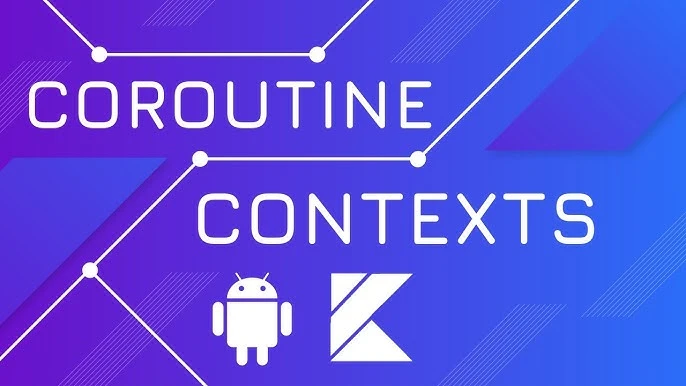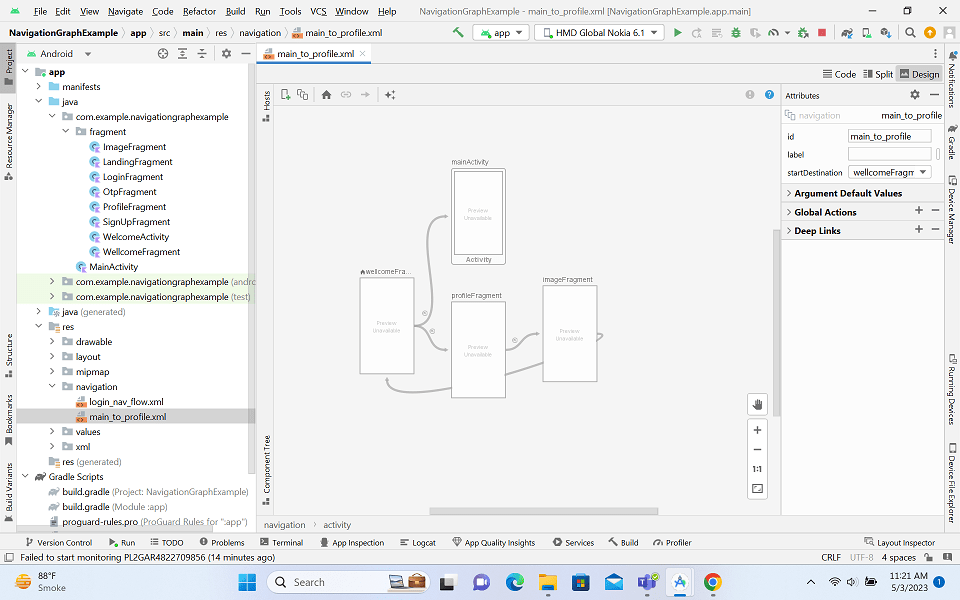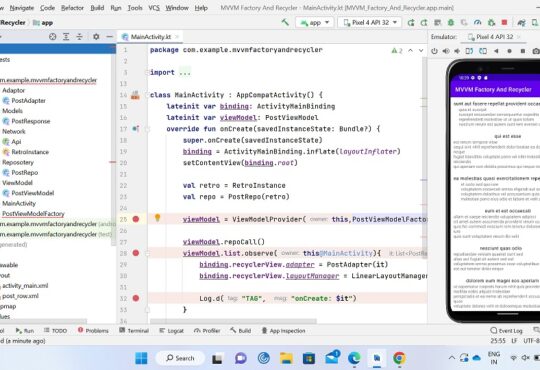
If you’re an Android developer in 2025, mastering Retrofit + Kotlin Coroutines is non-negotiable. This combo gives you clean, modern, and scalable networking code — without callback hell or RxJava complexity.
What are Kotlin Coroutines?
Often called “lightweight threads,” coroutines are concurrent programming constructs that allow you to write non-blocking code.
-
Non-Blocking: Unlike traditional threads that are expensive to create and block when waiting for a result (like a network response), coroutines can suspend their execution without blocking the underlying thread.
-
Structured Concurrency: Coroutines are best used within a
CoroutineScope, which manages their lifecycle. This means when the scope is cancelled (e.g., when a ViewModel is cleared), all coroutines launched within it are also cancelled, preventing memory leaks. -
The
suspendKeyword: This is the magic behind the integration. Thesuspendmodifier on a function signals to the compiler that this function can be paused and resumed later.
Why Retrofit + Coroutines Is the #1 Networking Choice – 2025
- Cleaner async code using
suspendfunctions - Less boilerplate compared to RxJava
- Built-in cancellation support
- Great with MVVM, Clean Architecture, and Flows
- Automatic threading with dispatchers
Async Made Easy: Kotlin Coroutines with Retrofit
Networking is the backbone of most modern applications, and in the Android world, Retrofit has long been the gold standard for making type-safe HTTP requests. However, dealing with asynchronous network calls used to involve callbacks or bulky libraries like RxJava. Enter Kotlin Coroutines!
Coroutines offer a new, idiomatic way to handle asynchronous code in Kotlin, making it look and feel like synchronous code. When paired with Retrofit, they dramatically simplify network layer implementation, eliminate callback hell, and improve code readability.
Benefits of the Coroutine Approach
-
Simplicity: Code is written sequentially, making it easier to read and debug. No more nested callbacks.
-
Thread Safety: The coroutine will automatically execute the request off the main thread (typically on
Dispatchers.IO) and automatically switch back to the main thread (Dispatchers.Main) when needed to update the UI, all without explicit thread management. -
Cancellation: Thanks to Structured Concurrency, cancelling a coroutine (e.g., when the user navigates away) is straightforward, preventing unnecessary resource consumption and crashes.
📦 Step 1 — Add Retrofit & Coroutine Dependencies
implementation("com.squareup.retrofit2:retrofit:2.11.0")
implementation("com.squareup.retrofit2:converter-gson:2.11.0")
implementation("org.jetbrains.kotlinx:kotlinx-coroutines-core:1.9.0")⚙️ Step 2 — Create API Model
data class User(
val id: Int,
val name: String,
val email: String
)Step 3 — Define Retrofit API with suspend Functions
interface UserApi {
@GET("users")
suspend fun getUsers(): List
@GET("users/{id}")
suspend fun getUser(@Path("id") id: Int): User
}- No callbacks
- No LiveData in networking layer
- Easy to test
Step 4 — Build Retrofit Instance
object ApiClient {
private const val BASE_URL = "https://jsonplaceholder.typicode.com/"
val api: UserApi by lazy {
Retrofit.Builder()
.baseUrl(BASE_URL)
.addConverterFactory(GsonConverterFactory.create())
.build()
.create(UserApi::class.java)
}
}Step 5 — Call API from ViewModel (Coroutine Safe)
class UserViewModel : ViewModel() {
private val _users = MutableLiveData<List>()
val users: LiveData<List> = _users
fun loadUsers() {
viewModelScope.launch {
try {
val response = ApiClient.api.getUsers()
_users.value = response
} catch (e: Exception) {
Log.e("UserViewModel", "Error: ${e.message}")
}
}
}
}viewModelScope ensures coroutines automatically cancel when ViewModel is cleared.
Bonus: Safe API Call Helper
Use this for clean error handling across your whole app:
suspend fun safeApiCall(
block: suspend () -> T
): Result {
return try {
Result.success(block())
} catch (e: Exception) {
Result.failure(e)
}
}Example — Using safeApiCall in ViewModel
viewModelScope.launch {
val result = safeApiCall { ApiClient.api.getUsers() }
result.onSuccess {
_users.value = it
}.onFailure {
Log.e("API Error", it.message ?: "Unknown error")
}
}
Final Thoughts
Retrofit + Coroutines is the cleanest and most efficient way to handle networking in modern Android apps (2025). If you’re building scalable apps, this setup is the foundation you need.







